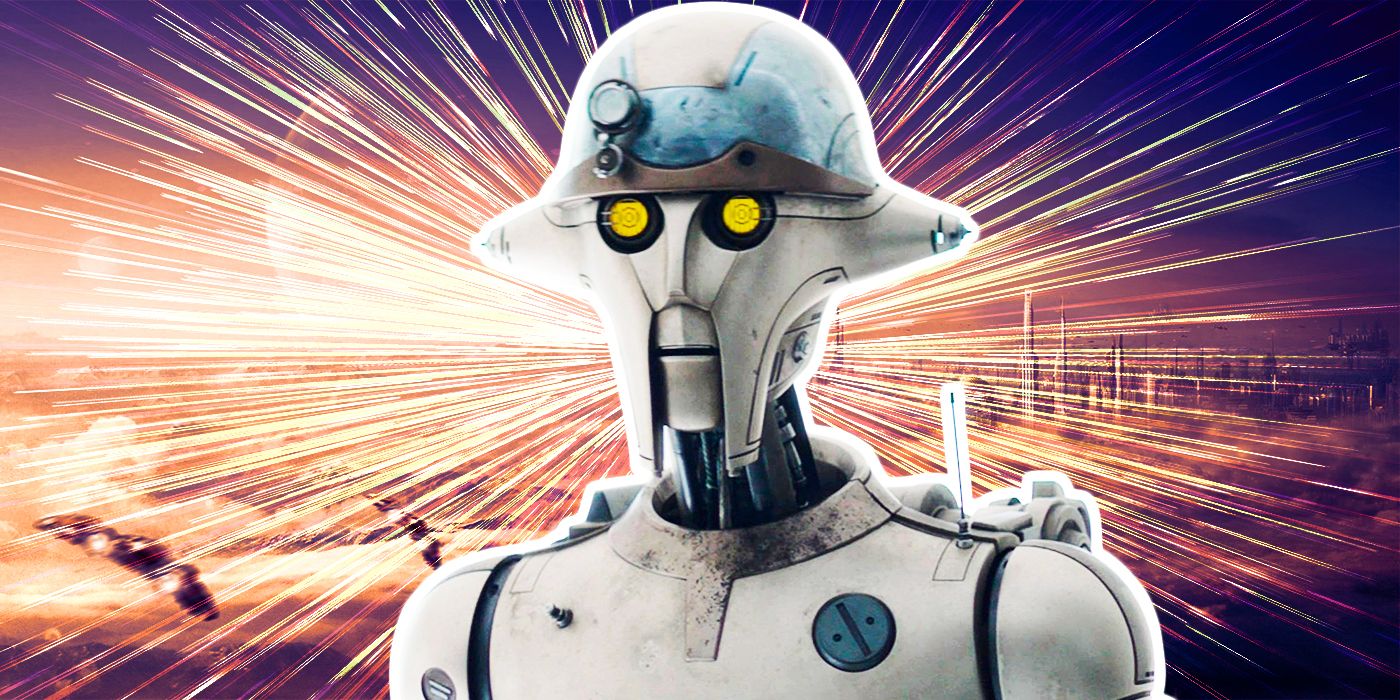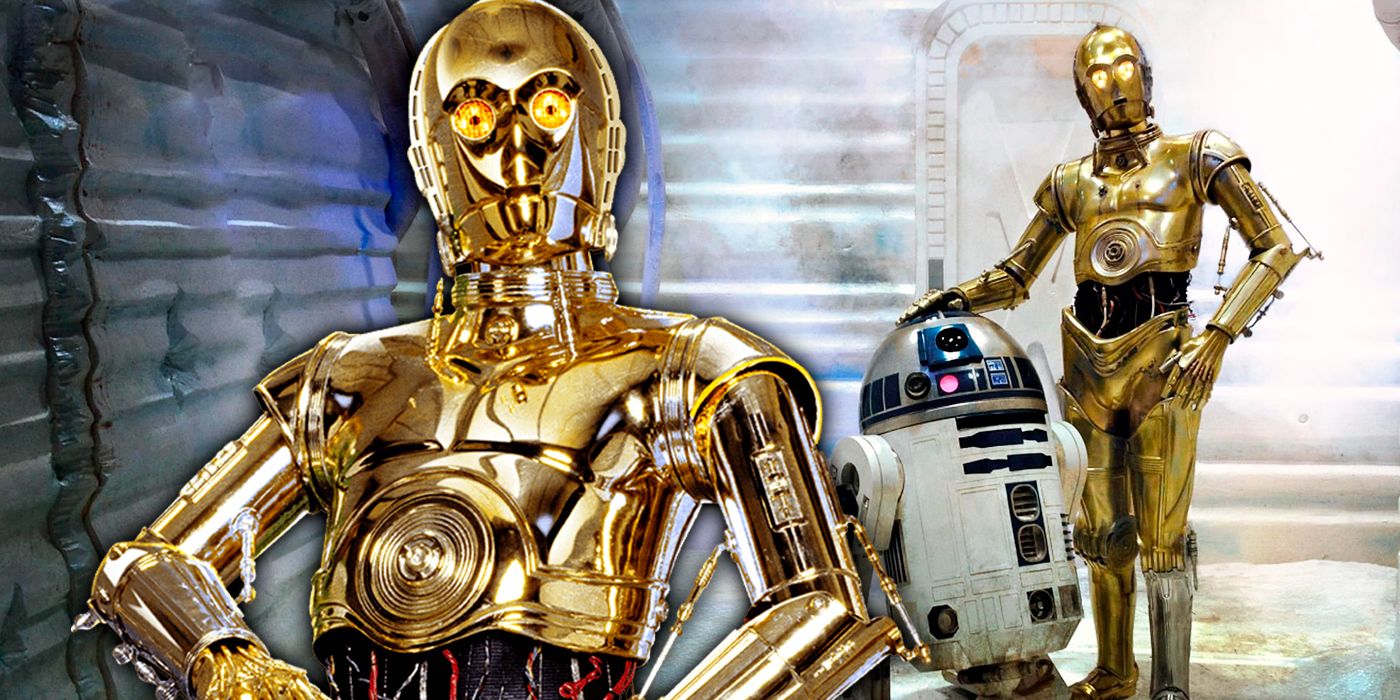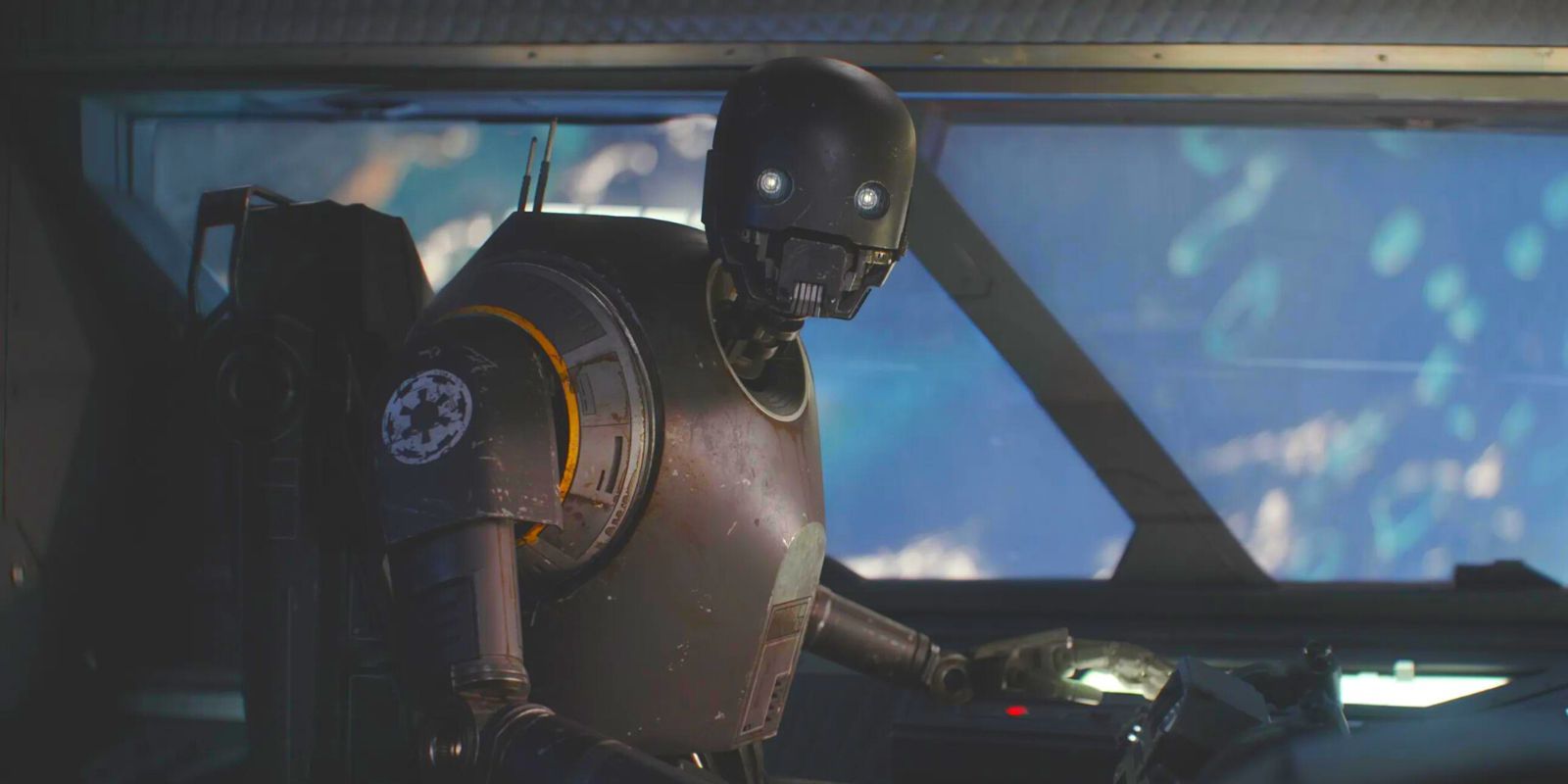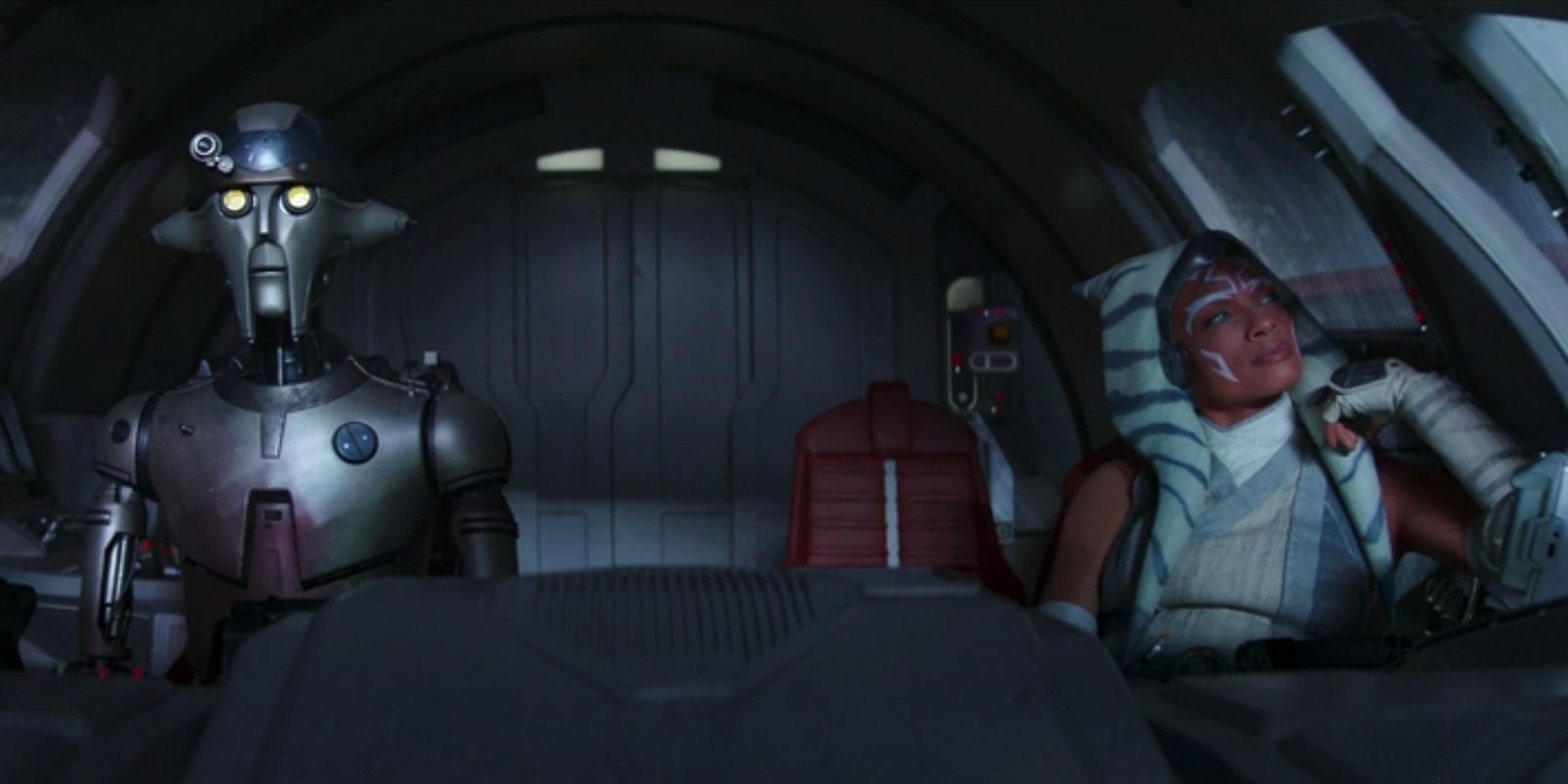Summary
- Star Wars' live-action talking droids have always attempted to emulate C-3PO's comedic appeal, at the cost of genuine character depth.
- K-2SO and L3-37 were disposable servants who failed to address the disparity in character depth between droids and human protagonists.
- Huyang diverged from the servant droid trope with his humanity and narrative importance, and demonstrated the true storytelling potential of droid characters.
Ahsoka's architect droid helped Star Wars move past its repetitive C-3PO tropes. Star Wars' robotic companions have been an essential part of the franchise's appeal ever since Episode IV – A New Hope. R2-D2 and C-3PO quickly turned into fan-favorite characters and became two of the most recognizable robots in all of sci-fi pop culture. C-3PO in particular garnered audience praise because of his charmingly humanoid appearance, and how he behaved like a loyal butler for Star Wars' heroes. He became so popular that other live-action Star Wars media have tried to introduce similar robots. Yet Huyang's depiction in the Ahsoka series managed to transcend C-3PO in regard to character depth.
Ahsoka followed the story of Ahsoka Tano and Sabine Wren as they searched for their missing friend, Ezra Bridger. The series focused on the troubled relationship between the two characters as they struggled to reconcile their fractured friendship. The role of their droid companion, Huyang, in helping restore their friendship was a vast improvement on Star Wars' other robot characters. Prior to Huyang's live-action debut, C-3PO's long-lasting influence had a negative impact on the franchise's depiction of droids.
C-3PO Was Popular for His Comedy, Which Lessened All Droids
Star Wars' droid problem originated with C-3PO's introduction in the franchise's first film. In Episode IV – A New Hope, C-3PO and R2-D2 appeared on the silver screen as the first examples of droids in the Star Wars franchise. The fact that they were both intelligent robots enhanced the film's sci-fi world-building, as did their goals of aiding Princess Leia's resistance against the Empire. However, the character dynamic shared by these droids proved to be problematic for C-3PO. Even though R2-D2 was a clever droid who saved the original film trilogy's heroes many times, he was also a rolling astromech who communicated in electronic beeps and whistles. The onus was on his partner, C-3PO, to provide a more humanized robot depiction that audiences could find relatable. C-3PO's bipedal, humanoid appearance and expressive language helped make him a beloved robot among Star Wars fans. Yet these attributes became a double-edged sword for the character.
Because R2-D2 was an extremely useful robot companion, C-3PO had to balance their dynamic by being utterly incompetent in contrast. C-3PO became an ignorant comic relief robot who acted as the punchline for the films' jokes, and whose naïveté was belittled by every other character. Furthermore, the first six Star Wars films characterized C-3PO as the protagonists' disposable sidekick -- an unreliable servant droid whose only redeeming quality was his hilarious ineptitude. The end result was a humanoid robot character who, unlike the human heroes, lacked any character depth beyond behaving like a clown. C-3PO's characterization suggested that the galaxy's humanoid robots weren't as intelligent or capable as actual humans, and that these droids' ignorance justified the constant disrespect they experienced.
C-3PO Inspired New Droids Who Were Just Sidekicks and Plot Devices
Various films in the Star Wars franchise have attempted to evolve the talking droid character archetype, albeit without success. Rogue One and Solo featured the live-action debuts of two humanoid robots who prominently followed in C-3PO's footsteps. K-2SO and L3-37 were both bipedal droids who followed the same Star Wars trope of a talking robot companion with a peculiar sense of humor. K-2SO was a fiercely deadly combatant who was more useful than C-3PO, while L3-37 condemned the disrespect that droids like C-3PO often endured. However, their unique traits didn't fix the disparity in narrative importance between droid and human protagonists in the franchise. L3-37 and K-2SO were unique characters, but they were narratively discarded when they abruptly died during their respective films. The death scenes for K-2SO and L3-37 failed to meaningfully develop their characters -- instead, the droids merely acted as plot devices to prop up the human heroes' motivations to continue the fight. These new droids struggled to fully escape the shadow of C-3PO's "droid sidekick" archetype, and they only existed to insert the spectacle of comedy or tragedy into the plot at brief intervals.
The droid problem inherent to Star Wars is emblematic of the narrative repetition that has always plagued the franchise. L3-37 and K-2SO weren't deep or complex characters, but that was because they emulated the simplicity of C-3PO's personality. After all, C-3PO became an iconic Star Wars character due to his endearingly simplistic naïveté. The franchise's succeeding films after A New Hope tried to replicate the original's classic sci-fantasy atmosphere, and C-3PO's comedic charm was an essential component of that atmosphere. However, Star Wars' attempts at recreating C-3PO have shown how much the franchise has narratively stagnated. Star Wars' concept of intelligent, humanoid robots carries untapped potential for stories about droid sentience and independence. Yet for the longest time the franchise kept returning to the basic C-3PO archetype -- a near-sentient droid who lacks any personal ambitions except to serve humans. By cyclically reiterating the idea of all humanoid robots being disposable servants, the Star Wars films failed to capitalize on the narrative implications of its unique talking droids.
Huyang Was a Mentor Droid - Not a Sidekick
Huyang fixed Star Wars' droid problem by diverging from the servant droid trope. In the Ahsoka series, Huyang was a lightsaber architect droid who accompanied Ahsoka and Sabine in their search for Ezra Bridger. However, his character was very different from C-3PO and other live-action droids. Huyang was a knowledgeable droid who helped train Sabine and offered his sage advice to the protagonists whenever the situation demanded it. He wasn't afraid to express his disagreement with Ahsoka's decisions, and the human characters rarely ever disparaged him for offering his honest opinions. Moreover, Ahsoka trusted Huyang to pilot her T-6 shuttle for her during several dangerous combat scenarios, and he was a respected member of her team. Huyang's depiction was a turning point for live-action droids because he demonstrated that he was just as capable as any of the Ahsoka series' heroes. Huyang wasn't just a dutiful servant droid like C-3PO or other humanoid robots in Star Wars. He was an independent and wise mentor figure with his own beliefs about the galaxy, to whom the human characters often looked for wisdom. Huyang's piloting and mentorship qualities proved that a droid can be just as valuable of a crew member as Episode IV's Han Solo or Ben Kenobi -- the only distinction being he was a robot instead of a human.
The emotion seen in Huyang's portrayal added greater depth to his less robotic qualities. Like Star Wars' other talking droids, Huyang had his comedic scenes when he humorously recognized the absurd dangers he faced. But unlike C-3PO and his bumbling antics, Huyang's humor didn't define his entire personality and character appeal. He often expressed a variety of emotions like skepticism, fear, and sorrow as the events of Ahsoka worsened. Huyang had his most emotional scene after Sabine and Ahsoka became separated from each other. He held Sabine's discarded helmet in his metal hands and mourned that the two Jedi didn't stay together. Huyang successfully improved Star Wars' droid trope by demonstrating the sheer humanity in his artificial personality. He had a nuanced, often flawed temperament that made him no different from actual human beings. Huyang proved that not all droids operate purely on machine logic alone, and that droids are also capable of complicated human emotions.
Huyang's Surprising Humanity Positively Affected Ahsoka's Story
Huyang's profound impact on his human allies set him apart from other intelligent droids. At the beginning of the Ahsoka series, Huyang understood that Sabine and Ahsoka had grown apart from each other. But Huyang also recognized the complications of their Jedi bond and how it could be salvaged. Despite his doubts about Sabine's Force abilities, he showed his trust in Sabine by urging her to stay on the Jedi path. Huyang's logical conclusions that Sabine might never become a Jedi didn't prevent him from encouraging Sabine and Ahsoka to stick together. That belief ultimately convinced Sabine to save Ahsoka in the Season 1 finale, and reconciled their relationship. Huyang had a greater narrative impact than any humanoid droid who previously appeared in live-action. He played a significant role in the character development of Ahsoka and Sabine by helping them learn to trust in each other again. Huyang positively influenced the other characters' arcs, and he did it by defying his robotic logic and embracing human emotions.
Even though C-3PO played a perfect comedy relief character, the shallowness of his robotic personality negatively influenced most live-action droids who appeared after him. Huyang's role in Ahsoka finally gave Star Wars droids the complex portrayal that they've always deserved. He demonstrated that the franchise's robotic characters are just as narratively important as its Jedi protagonists.





